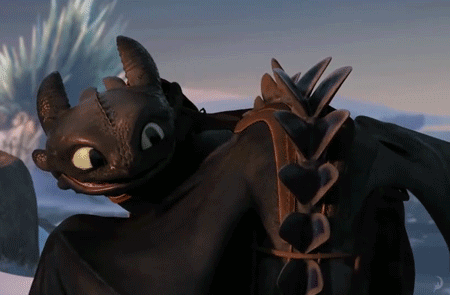Example Types
Throughout this website, I discuss several different types of examples that you could use in your multimodal work. While I give some good information about different examples in different places, I also wanted to provide one place where you can get a snapshot of the different example types. On this page, I provide information about four different example types, including information about when that example might be most appropriate, which multimodal formats can include that example, and which pages on this website you can learn more.
Image
Description: The most basic multimodal example is the image. These are often still images or screenshots from a film.
Use: Images are useful to explain what something looks like. For example, I could use this image, taken from BlueSky's Ferdindand, to talk about how the film makes many visual jokes based on phrases using the word or concept of bull, such as "bull in a china shop". I don't need sound or movement to show both how Ferdinand is a literal bull in a china shop nor to point to how his worried facial expression reminds us why this situation is so ludicrous. The image itself gets the job done.
Multimodal formats: Academic papers, slideshow presentations, blog posts, video essays.
To learn more, check out: Academic paper and blog post

GIF
Description: GIF (short for Graphic Interchange Format and pronounced however you like) is a short animated clip that repeats on itself indefinitely. GIFs are basically just moving pictures without sound and are generally less than 10 seconds long.
Use: GIFs are particularly wonderful for expressing motion when: 1) sound isn't necessary; 2) you want to explain a very small motion. For example, if I wanted to talk about how Toothless in How to Train Your Dragon 2 takes an almost childish delight in the new "adult" features of his body, such as the separable back spikes that give him more flight maneuverability, I could show this GIF of him smiling while using them to clap. The movement within the GIF allows me to show how he uses them for something beyond their intended purpose.
Multimodal formats: Slideshow presentations, blog posts, video essays.
To learn more, check out: Slideshow presentation and blog post

Sound Clip
Description: An extremely short recording of sound, taken from a film, television, interview, song, or anything else that contains sound.
Use: You can pull sound bites from anything that has sound. Sometimes, they're used because someone's performance is so good that it works better than your description of it, like using a written quote. Sometimes, you're analyzing sound and want your audience to hear what you're analyzing. For example, if I wanted to analyze the themes in the music of Hello, Dolly! that are then incorporated into Wall-E through the latter's use of the former's music, I could include a sound clip from one of the songs that's repeated often in Wall-E: "Put on Your Sunday Clothes". If I was working with something like a podcast or video essay, I would only give a small clip of the song to point to a specific example. In something like a blog post, though, I could give the full song (as I do here), then point to certain elements of it.
Multimodal formats: Slideshow presentation, blog post, podcast, video essay
To learn more, check out: Podcast
Video Clip
Description: A small segment of any televisual media, generally no longer than 30 seconds (though can be longer if needed.
Use: Video clips are useful when you need to show multiple elements of a scene: movement, sound, staging, lighting, etc. Clips are generally longer than GIFs and include sound, allowing you to capture a more comprehensive picture. For example, I could include this video clip that introduces the city of Zootopia. I could definitely include images or even GIFs showing different elements of the city, but this clip allows me to talk about the way the creators add layer upon layer of the city to present a whole that is made up of different parts.
Multimodal formats: Slideshow presentations, blog posts, video essays.
To learn more, check out: Video essay